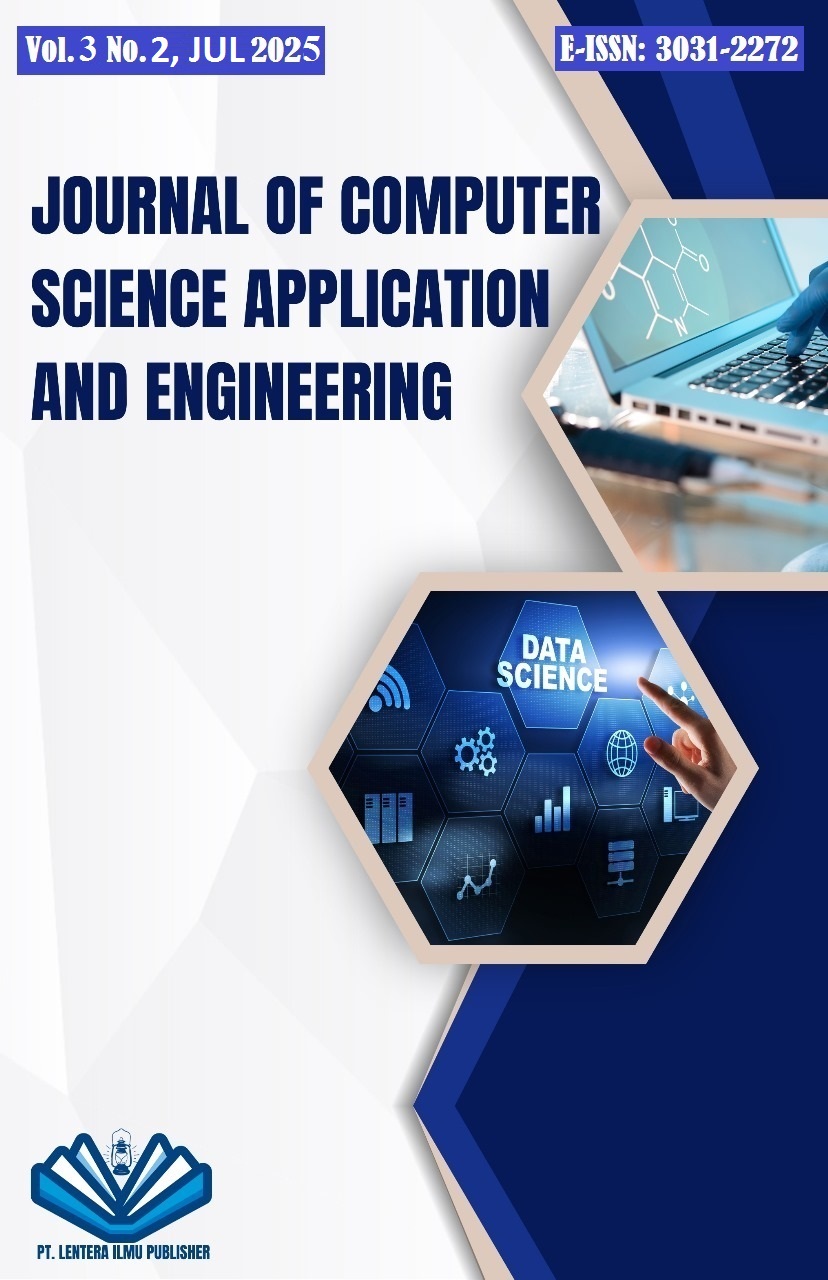Workload Analysis System Optimization through the Integration of an Interactive Dashboard
DOI:
https://doi.org/10.70356/josapen.v3i2.62Keywords:
Workload Analysis System, Optimization, Interactive DashboardAbstract
In the era of digital transformation and bureaucratic reform, optimizing organizational performance in police institutions demands effective workload management. Workload analysis (Analisis Beban Kerja/ABK) is essential for ensuring fair task distribution that aligns with personnel capacity and competence. The Community Development Unit (Binmas) of the South Sumatra Regional Police plays a pivotal role in building public trust and cooperation. However, the absence of an integrated system to analyze workload distribution has resulted in potential inefficiencies, imbalanced task assignments, and increased work stress. Recent findings highlight a significant link between workload and stress levels among police personnel, emphasizing the urgency of system optimization. This study proposes the integration of an interactive dashboard to enhance the effectiveness of workload analysis in the Binmas Unit. Drawing on successful implementations such as the e-dikbangspes system and SI-ABK Precision application, the research underscores how dashboard technology can streamline data access, improve staffing decisions, and support the development of a more responsive organizational structure. By focusing on the Binmas Unit, this study aims to close the existing technological gap and contribute to improved personnel management and institutional performance through digital innovation in workload monitoring.
Downloads
References
G. Brataas, P. Braskerud, I. A. Tøndel, and S. Kjærnsrød, “Organizational factors of software performance testing for systems of systems: A case study using high-reliability organization theory to understand an outage,” J. Syst. Softw., vol. 229, no. March, 2025, doi: 10.1016/j.jss.2025.112444.
E. Arribe, M. S. Damila, R. Rezeki, A. Afrida, and R. P. Putra, “ Analisis dan Perancangan Sistem Informasi Seleksi Karyawan Baru pada PT.Erafone Artha Retailindo Cabang Pekanbaru”, Da’watuna: Journal of Communication and Islamic Broadcasting, vol. 4(2), 726–736, 2023, doi: 10.47467/dawatuna.v4i2.4957
I. Afan and M. Su’ud, “Analisis Beban Kerja Pegawai Negeri Sipil Pada Sekretariat Dinas Pekerjaan Umum Perumahan Dan Energi Sumber Daya Mineral Provinsi Diy (Studi Kasus Jabatan Fungsional Umum)”, Jurnal Riset Akuntansi Dan Bisnis Indonesia, 1(2), 485–500, 2021, doi: 10.32477/jrabi.v1i2.385
O. O. Olusanya, R. G. Jimoh, S. Misra, and J. B. Awotunde, “A neuro-fuzzy security risk assessment system for software development life cycle,” Heliyon, vol. 10, no. 13, p. e33495, 2024, doi: 10.1016/j.heliyon.2024.e33495.
S. Padmanabhan Poti and C. J. Stanton, “Enabling affordances for AI Governance,” J. Responsible Technol., vol. 18, no. May, p. 100086, 2024, doi: 10.1016/j.jrt.2024.100086.
B. Battulga, L. Tsoodol, E. Dovdon, N. Bold, and O. Namsrai, “Metric-based defect prediction from class diagram,” Array, vol. 27, no. October 2024, p. 100438, 2025, doi: 10.1016/j.array.2025.100438.
R. Subha and J. Zhang, “An optimal construction of smart aged homes based on SDLC using smart sensors and agent networks,” Int. J. Intell. Networks, vol. 3, no. September, pp. 138–142, 2022, doi: 10.1016/j.ijin.2022.09.003.
C. Maraveas, G. Kalitsios, M. I. Kotzabasaki, D. V. Giannopoulos, K. Dimitropoulos, and A. Vatsanidou, “Real-time freshness prediction for Apples and Lettuces using imaging recognition and advanced algorithms in a user-friendly mobile application,” Smart Agric. Technol., vol. 12, no. June, p. 101129, 2025, doi: 10.1016/j.atech.2025.101129.
D. Rechkemmer, M. Korth, M. C. May, and G. Lanza, “Development of a concept for the design of user-friendly simulation models,” Procedia Comput. Sci., vol. 254, pp. 110–115, 2025, doi: 10.1016/j.procir.2025.01.019.
Z. Luo et al., “Optimal scheduling of smart home energy systems: A user-friendly and adaptive home intelligent agent with self-learning capability,” Adv. Appl. Energy, vol. 15, no. April, p. 100182, 2024, doi: 10.1016/j.adapen.2024.100182.
J. Wamema, A. Alunyu, M. Amiyo, and J. Nabukenya, “Enterprise architecture requirements for standardising digital health in Uganda’s health system,” Heal. Policy Technol., vol. 12, no. 4, p. 100805, 2023, doi: 10.1016/j.hlpt.2023.100805.
Y. Mossa, P. Smith, and K. Bland, “Reconceptualizing Enterprise Resource Planning (ERP) Systems from a Software Architecture Perspective Using a Framework Based on ERP System Characteristics,” Procedia Comput. Sci., vol. 256, pp. 174–189, 2025, doi: 10.1016/j.procs.2025.02.110.
C. Ku, N. Che, K. Mohd, and F. Shahbodin, “Personalized Learning Environment : Alpha Testing , Beta Testing & User Acceptance Test,” Procedia - Soc. Behav. Sci., vol. 195, pp. 837–843, 2015, doi: 10.1016/j.sbspro.2015.06.319.
[1] A. Strebinger and H. Treiblmaier, “Eastern Ease and Western Worries? How collectivism and belief in magic increase user acceptance of operationally autonomous blackbox technologies,” Int. J. Inf. Manage., vol. 84, no. June, p. 102939, 2025, doi: 10.1016/j.ijinfomgt.2025.102939.
L. Kauschke and J. Vogt, “Increasing public acceptance of fuel cell vehicles in Germany: A perspective on pioneer users,” Int. J. Hydrogen Energy, vol. 148, no. March, p. 149726, 2025, doi: 10.1016/j.ijhydene.2025.05.356.
P. Ardimento, M. Capuzzimati, G. Casalino, D. Schicchi, and D. Taibi, “A novel LLM-based classifier for predicting bug-fixing time in Bug Tracking Systems,” J. Syst. Softw., vol. 230, no. June, p. 112569, 2025, doi: 10.1016/j.jss.2025.112569.
D. Wang, M. Galster, and M. Morales-Trujillo, “Information needs in bug reports for web applications,” J. Syst. Softw., vol. 219, no. October 2024, 2025, doi: 10.1016/j.jss.2024.112230.
S. Mostafa, S. T. Cynthia, B. Roy, and D. Mondal, “The Journal of Systems and Software,” IEEE Softw., vol. 3, no. 4, pp. 77–77, 2008, doi: 10.1109/ms.1986.234074.
Downloads
Published
How to Cite
Issue
Section
License
Copyright (c) 2025 Tiara Karisa, Ahmad S

This work is licensed under a Creative Commons Attribution-ShareAlike 4.0 International License.










